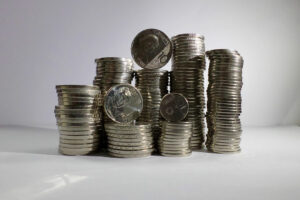




Quarterly Economic Growth Release: More BSP cuts to come
 DOWNLOAD
DOWNLOAD

Monthly Economic Update: Fed catches up
 DOWNLOAD
DOWNLOAD

Inflation Update: Steady and mellow
 DOWNLOAD
DOWNLOAD


Term deposit yields mixed on peso, easing bets

Yields on the Bangko Sentral ng Pilipinas’ (BSP) term deposits were mixed on Wednesday due to the continued weakness of the peso and bets of a policy rate cut as early as next month.
Demand for the BSP’s term deposit facility (TDF) reached PHP 321.657 billion on Wednesday, higher than the PHP 230-billion offer and the PHP 207.107 billion in bids for the PHP 200 billion auctioned off last week.
Broken down, bids for the seven-day papers amounted to PHP 159.459 billion, above the PHP 120 billion auctioned off by the BSP as well as the PHP 116.409 billion in tenders seen in the previous week for PHP 90 billion on the auction block.
Banks asked for yields ranging from 6.495% to 6.525%, a much narrower band compared with the 6.275% to 6.5275% seen a week ago. This caused the average rate of the one-week term deposits to inch up by 0.9 basis point (bp) to 6.5154% from 6.5145% previously.
Meanwhile, the 14-day term deposits attracted tenders amounting to PHP 162.198 billion, higher than the PHP 110-billion offer and the PHP 90.698 billion in bids recorded a week ago for the PHP 110-billion offering.
Accepted rates for the tenor ranged from 6.5245% to 6.575%, a slightly wider and lower margin versus the 6.55% to 6.595% seen last week. This caused the average rate of the two-week papers to drop by 0.28 bp to 6.5681% from 6.5709% in the prior auction.
The BSP has not auctioned off 28-day term deposits for more than three years to give way to its weekly offerings of securities with the same tenor.
The term deposits and the 28-day bills are used by the BSP to mop up excess liquidity in the financial system and to better guide market rates.
TDF yield movements were mixed on Wednesday after the peso recently fell to 20-month lows, Rizal Commercial Banking Corp. Chief Economist Michael L. Ricafort said in a Viber message.
On June 26, the local unit closed at PHP 58.86 against the greenback, its worst finish since its PHP 58.87-a-dollar close on Oct. 24, 2022.
The peso has been trading at the PHP 58-per-dollar level since May and has been inching closer to its record low of P59 in recent weeks as safe-haven demand and monetary easing bets have boosted the dollar versus most emerging-market currencies.
The central bank has said it occasionally intervenes in the foreign exchange market to ensure the peso does not depreciate sharply.
BSP Governor Eli M. Remolona, Jr. has also said that the impact of a weak peso on inflation is minimal.
Mr. Ricafort added that TDF yields mostly moved sideways amid policy rate cut bets due to expectations of slower Philippine inflation following the approval of an executive order that slashes the tariffs on rice imports.
President Ferdinand R. Marcos, Jr. approved Executive Order No. 62, which reduces the tariff on rice imports to 15% from 35% previously. This is widely expected to help bring down rice prices and rein in inflation.
Mr. Remolona last week said the Monetary Board is “on track” and “somewhat more likely than before” to slash rates at its Aug. 15 policy meeting as he expects the consumer price index (CPI) to further ease this semester with the implementation of lower tariffs on rice.
The BSP could cut rates by 25 bps in the third quarter and by another 25 bps in the fourth quarter, he added.
The Monetary Board’s Aug. 15 review is its only meeting in the third quarter. Meanwhile, its last two reviews for the year will be held in the fourth quarter and are scheduled on Oct. 17 and Dec. 19.
An August cut would be the first for the BSP in over three years, which last slashed borrowing costs by 25 bps in November 2020 to bring the policy rate to a record low of 2% during the pandemic.
The Philippine Statistics Authority will release June CPI data on Friday (July 5). A BusinessWorld poll of 14 analysts yielded a median estimate of 3.9% for June inflation, within the BSP’s 3.4-4.2% forecast for the month.
Headline inflation averaged 3.5% for the first five months, well within the central bank’s 2-4% goal for the year. — Luisa Maria Jacinta C. Jocson
This article originally appeared on bworldonline.com





 By BusinessWorld
By BusinessWorld